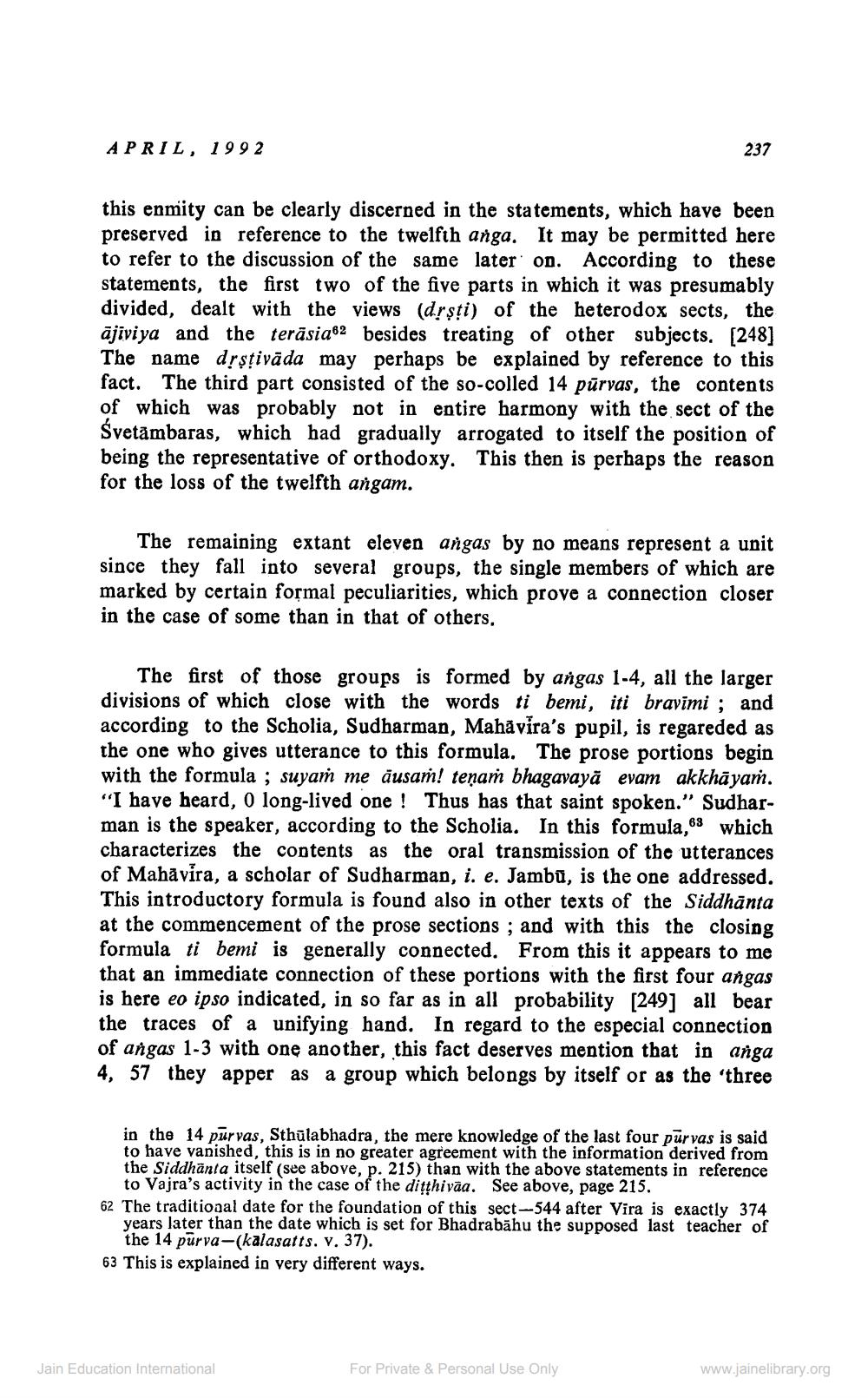________________
APRIL, 1992
this enmity can be clearly discerned in the statements, which have been preserved in reference to the twelfth anga. It may be permitted here to refer to the discussion of the same later on. According to these statements, the first two of the five parts in which it was presumably divided, dealt with the views (drști) of the heterodox sects, the ājiviya and the terasia62 besides treating of other subjects. [248] The name dṛṣṭivāda may perhaps be explained by reference to this fact. The third part consisted of the so-colled 14 purvas, the contents of which was probably not in entire harmony with the sect of the Śvetambaras, which had gradually arrogated to itself the position of being the representative of orthodoxy. This then is perhaps the reason for the loss of the twelfth angam.
237
The remaining extant eleven angas by no means represent a unit since they fall into several groups, the single members of which are marked by certain formal peculiarities, which prove a connection closer in the case of some than in that of others.
The first of those groups is formed by angas 1-4, all the larger divisions of which close with the words ti bemi, iti bravimi; and according to the Scholia, Sudharman, Mahavira's pupil, is regareded as the one who gives utterance to this formula. The prose portions begin with the formula; suyam me äusam! teṇam bhagavaya evam akkhāyaṁ. "I have heard, 0 long-lived one! Thus has that saint spoken." Sudharman is the speaker, according to the Scholia. In this formula, 63 which characterizes the contents as the oral transmission of the utterances of Mahavira, a scholar of Sudharman, i. e. Jambu, is the one addressed. This introductory formula is found also in other texts of the Siddhanta at the commencement of the prose sections; and with this the closing formula ti bemi is generally connected. From this it appears to me that an immediate connection of these portions with the first four angas is here eo ipso indicated, in so far as in all probability [249] all bear the traces of a unifying hand. In regard to the especial connection of angas 1-3 with one another, this fact deserves mention that in anga 4, 57 they apper as a group which belongs by itself or as the 'three
in the 14 purvas, Sthulabhadra, the mere knowledge of the last four purvas is said to have vanished, this is in no greater agreement with the information derived from the Siddhanta itself (see above, p. 215) than with the above statements in reference to Vajra's activity in the case of the diṭṭhivaa. See above, page 215.
62 The traditional date for the foundation of this sect-544 after Vira is exactly 374 years later than the date which is set for Bhadrabahu the supposed last teacher of the 14 purva-(kalasatts. v. 37).
63 This is explained in very different ways.
Jain Education International
For Private & Personal Use Only
www.jainelibrary.org




